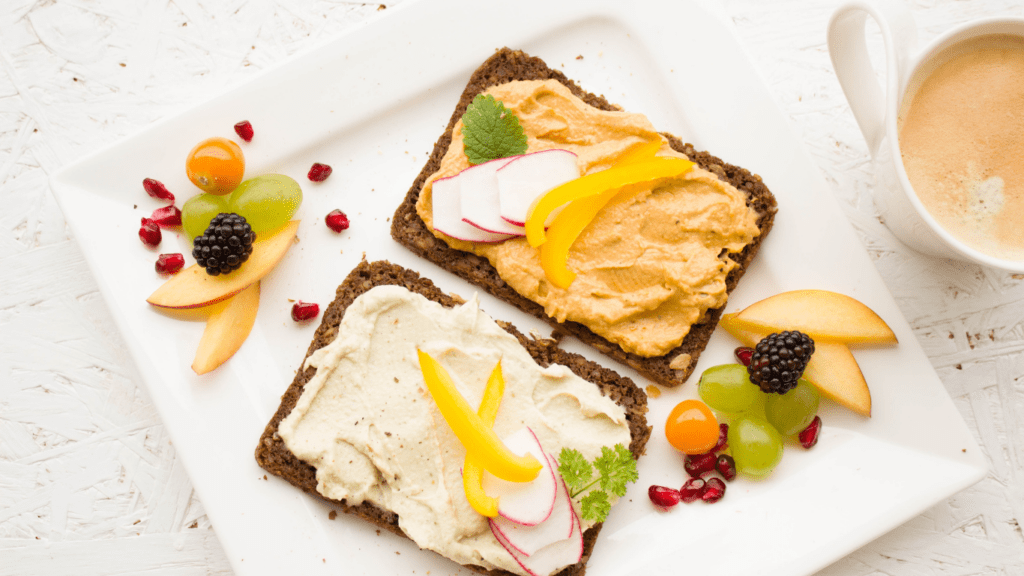Understanding the Importance of Healthy Eating in Childhood
Healthy eating in childhood is crucial. Early habits shape nutrition preferences and impact long-term health.
Why Early Habits Matter
Eating habits formed early often stick throughout life. Introducing diverse, nutrient-rich foods aids children’s growth and cognitive development. If children eat balanced meals, they develop strong immune systems and are less prone to chronic diseases.
Long-Term Benefits for Children
Establishing healthy eating patterns early leads to lasting benefits. Children who consume a varied diet tend to perform better academically, have higher energy levels, and maintain healthier weights as they age. Following a nutritious diet also reduces the risk of developing conditions like obesity, diabetes, and heart disease later in life.
Key Components of a Healthy Diet for Children
Children need balanced and nutritious diets to support their growth and development. Ensuring they get essential nutrients from various food groups sets a strong foundation for their future health.
Essential Nutrients for Growing Bodies
Children’s bodies require a range of nutrients to function optimally and grow properly. It’s important to include:
- Proteins: Aid in building and repairing tissues. Examples include lean meats, beans, and dairy.
- Calcium: Strengthens bones and teeth. Found in milk, cheese, and fortified plant-based milks.
- Iron: Crucial for blood production and muscle function. Sources are red meat, spinach, and fortified cereals.
- Vitamin D: Enhances calcium absorption and bone health. Available in sunlight exposure, fortified foods, and fish like salmon.
- Fiber: Supports digestion and prevents constipation. Present in fruits, vegetables, whole grains, and legumes.
Balancing Macronutrients
Balancing macronutrients ensures children receive energy and nutrients in appropriate proportions. Focus on:
- Carbohydrates: Primary energy source. Include whole grains, fruits, and vegetables.
- Proteins: Important for growth and maintenance. Provide through eggs, poultry, and nuts.
- Fats: Essential for brain development and hormone production. Opt for healthy fats from avocados, nuts, and olive oil.
Encouraging a variety of foods helps meet these nutritional needs and promotes a healthy relationship with eating.
Strategies for Encouraging Healthy Eating Habits

Building healthy eating habits from a young age requires a combination of strategies that engage children and create a positive association with nutritious foods.
Involving Children in Meal Planning and Preparation
Engaging children in meal planning and preparation can foster an interest in healthy eating. When kids help choose and prepare meals, they’re more likely to eat what they’ve made. Assign age-appropriate tasks to make the process fun and educational.
For example, younger children can wash fruits and vegetables while older kids can assist in measuring ingredients or cooking simple dishes. This involvement helps them learn about different foods and their benefits.
Creating a Positive Eating Environment
Establishing a positive eating environment is crucial for developing healthy habits. Family meals encourage better food choices as children tend to model their parents’ behaviors. Reduce distractions during meals by turning off electronics to focus on eating and conversing.
Serve balanced meals and provide consistent mealtime routines to promote regular eating patterns. Create an atmosphere where trying new foods is encouraged and avoid using rewards or punishments related to eating, fostering a healthy relationship with food.
Overcoming Common Challenges
Building healthy eating habits in children can be challenging due to various obstacles. However, by addressing these challenges head-on, lasting healthy habits can be established.
Dealing with Picky Eaters
Children often exhibit picky eating behaviors, especially during early development. To address this:
- Introduce Variety: Offer different foods frequently to expand their palate. For example, offer both green beans and carrots at dinner.
- Be Patient: Children may need to try a new food multiple times before accepting it. Persistence matters; continue reintroducing the food without pressure.
- Involve Them: Let children help in meal preparation. It’s more likely they’ll eat something they’ve helped make, like assembling a salad.
- Set a Good Example: Children mimic adults. Eating varied and nutritious food yourself encourages them to do the same.
- Create a Positive Environment: Avoid negative commentary about food. Keep mealtimes upbeat and stress-free.
Addressing Convenience and Fast Food
The convenience of fast food can make it an appealing option for busy families. To tackle this:
- Plan Ahead: Prepare meals in advance. Batch cooking on weekends ensures healthy options are ready for busy weekdays.
- Opt for Healthy Alternatives: When fast food is unavoidable, choose healthier menu options. Many restaurants offer salads and grilled items instead of fried foods.
- Educate Children: Teach children about nutrition and involve them in choosing healthier options. Explaining why certain foods are better helps them make informed choices.
- Limit Fast Food Visits: Make fast food an occasional treat rather than a regular habit. Establish home-cooked meals as the norm.
- Make Home Meals Fun: Create fun and engaging meals at home, like DIY taco nights or homemade pizzas. This encourages children to enjoy healthy eating as part of their routine.
By addressing these common challenges, overcoming obstacles to building healthy eating habits becomes more manageable, leading to better long-term health outcomes for children.

 Cynthian Holleyori is a skilled article writer who has been integral to the development of Toddler Health Roll. Her deep understanding of child health and development is evident in her well-researched and practical articles, which provide parents with essential guidance on raising healthy toddlers. Cynthian's contributions have significantly shaped the platform, ensuring that it addresses the most pressing concerns of parents and caregivers.
Beyond her expertise in toddler health and nutrition, Cynthian also delves into the mental and emotional well-being of young children. She offers valuable parenting strategies that help families foster a nurturing and supportive environment for their toddlers. Her dedication to building Toddler Health Roll has made it a trusted and comprehensive resource for parents committed to their children's growth and happiness.
Cynthian Holleyori is a skilled article writer who has been integral to the development of Toddler Health Roll. Her deep understanding of child health and development is evident in her well-researched and practical articles, which provide parents with essential guidance on raising healthy toddlers. Cynthian's contributions have significantly shaped the platform, ensuring that it addresses the most pressing concerns of parents and caregivers.
Beyond her expertise in toddler health and nutrition, Cynthian also delves into the mental and emotional well-being of young children. She offers valuable parenting strategies that help families foster a nurturing and supportive environment for their toddlers. Her dedication to building Toddler Health Roll has made it a trusted and comprehensive resource for parents committed to their children's growth and happiness.
